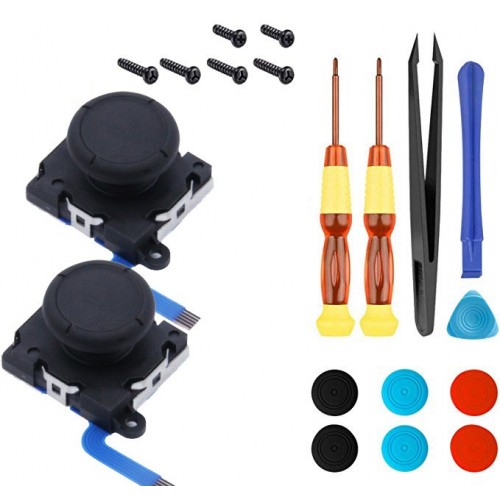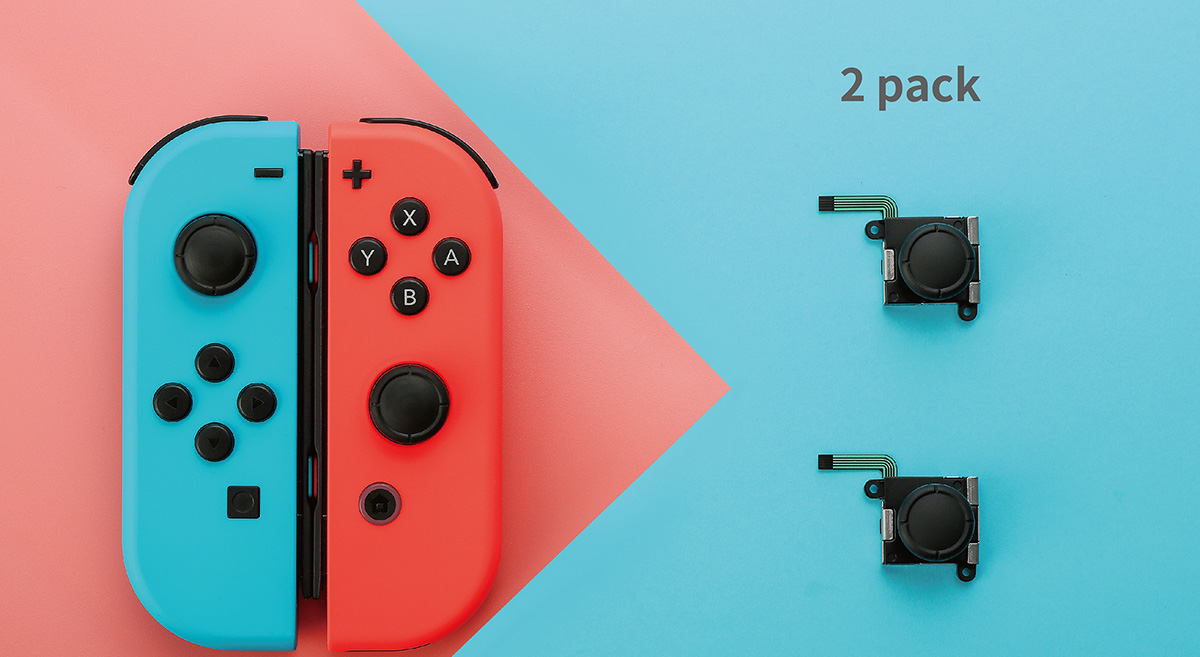In this mode you hold the Ringcon sideways so you can access the buttons and stick on the Joycon with your right hand. The Ringcon tilting/rotating still controls the left stick of the virtual x360 controller, the analog stick on the Joycon controls the right analog stick. The buttons on the Joycon are usable as well as squat, run and sprint. Joy-Con Toolkit v1.5.2 CTCaer released this on Aug 10, 2017 90 commits to master since this release Fixed a major compatibility issue with newest shipments of Joy-Con. Previously we were expecting 2 FW Ram Patches inside the SPI dump. New Joy-Con have only 1 like Pro. 474 votes, 75 comments. 3.0m members in the NintendoSwitch community. The central hub for all news, updates, rumors, and topics relating to the.

Nintendo Switch Disassembly: Tools Required
The Nintendo Switch Joy-Con and Dock require a few tools. We used our iFixit Pro Tech Toolkit for this teardown (they also sponsored the coverage, as we needed some specific pieces for this). The primary tools are:
- Phillips Head screwdrivers (small + medium A1 sizes needed)
- Y-Shape Tri-Wing screwdriver
- Rubbing alcohol if removing thermal compound
- Thermal compound if replacing
The iFixit Pro Tech Toolkit ($70) contains the uncommon Y-drive screws, alongside spudgers, pliers/priers, and other useful tools for PC building or disassembly. We would also suggest a magnetic mat so that you can draw an outline of the Switch and then track the specific locations of the screws. This will help reduce the chance of reassembling and leaving out a screw.
Nintendo Switch Dock Tear-Down
As previously, this isn’t a tutorial and we don’t recommend doing this. We’re just taking the thing apart for fun, frankly.
The dock is fairly simple. There are 8 Y-drive/tri-wing screws in the back of the dock, four of which hold the PCB housing to the controller board hosting the 2x USB2.0, 1x USB3.0, and 1x HDMI ports. Removing these four screws will unveil the PCB, and the next four (lower part of the plastic) will begin the process of splitting the dock in half. Once these are removed, a set of sunken screws can be accessed within the dock.
Separating the PCB enclosure from the housing leads us to a data ribbon cable and to an LED power cable. We can remove the PCB by disconnecting both, then lightly pulling on the securing prongs to release the PCB. Flipping it over, the PCB hosts an ST MCU and VLI USB controller (VLI VL210-Q4), a USB3.0 hub controller that supports rapid charging via USB. The VLI controller supports faster controller than the baseline USB standard, and the ST controller is some sort of ARM-based MCU (we are not positive exactly what).
This board is everything that’s in the dock, other than a few springs, an LED, and a charging PCB. It’s simple, and largely a plastic enclosure that’s built to host the Switch proper.
Nintendo Switch Joy-Con Tear-Down
For the Joy-Con tear-down, we selected the right side (red) Joy-Con as it’s host to an NFC and IR sensor. The IR sensor isn’t present in the left stick, leaving us with the right stick as the more complex of the two.
In terms of disassembly, they’re both equal in “difficulty” – it’s a handful of Y-drive screws for the housing, then careful pulling to split the housing and expose the PCB. There’s one main PCB within the housing, a battery opposing it, and all the switches for the top-side buttons.
The battery located within the Joy-Con is 3.7V at 525mAh, 1.9Wh. The battery is labeled as HAC-006, HAC-A-BPJMX-C0. This should be user serviceable, assuming you could find a suitable replacement. Replacing the Switch Joy-Con batteries would theoretically be a trivial process – there’s one cable and a set of 4-5 screws, then the battery itself. Once the Switch has been out a while, we’d expect replacements should crop-up on eBay from China.

A Broadcom controller takes up a large part of the PCB space (BCM20734UA1, KFFB3G, UK1630 P11, 624523 T2) on the Joy-Con. Broadcom is a large maker of wireless and RF devices. A separate NFC IC is located adjacent to the Broadcom device.
Reassembling the Joy-Con (if fully disassembled) can be a bit frustrating, given the ribbon cables and all the small buttons to hold in place. Not as bad as the Switch proper, but not easy. Actually, none of this is particularly fun to reassemble, but it’s par for the course for the portable devices we’ve worked with.
Host: Steve Burke
Video: Andrew Coleman
Are you bored with the same controller colored icons on the Nintendo Switch, wish they matched your different colored joy cons or pro controller from games like Splatoon 2. Well, now you can make the controller icons any color you want to thank’s to the Joy-Con Toolkit v1.0 by CTCaer.
The Joy con tool kit is simple and easy to use, all you need is a Bluetooth adapter and a Windows PC with .net framework v4.5.x and Visual c++ 2015 x86 redist installed. If you don’t have a Bluetooth adapter the program will fail to start and the same goes for .net framework & visual c+ these must be installed first before you run the Joycon tool kit. Also, you’ll need to pair the Joy con’s or pro controller to the PC before you start the program.
Once you have everything installed and the controller’s pair to the PC, it’s time to open up the Joycon tool kit and backup your SPI flash before doing anything else. It may take a little bit and the program might stop responding but don’t worry its still working and doing its thing.

Now that you’re done backing up the SPI file time to change those icon colors to match your controllers or just your favorite colors.
Once you pick out the colors you want to use just hit write body color and then write button color and that’s it your done. Now the Switch will display the color you pick every time that controller pairs to the Switch up in the top-left hand corner or in the controller settings on the main menu.
The icon display on the main menu of the Switch in the bottom left-hand corner does not change as that icon is part of the Switch and the joy con tool kit only modifies the icon inside of the controller. So you don’t have to worry about anything as this tool kit does nothing to your Switch and only changes the icon inside of the controller that the Switch reads and displays.
What it can currently do:
- Change colors of your Joy-Con or Pro Controller
- Backup your SPI flash
- View S/N and MAC address
- View Firmware version
What you need:
- Bluetooth adapter
- Windows PC
Changelog:
v1.0: Initial release
Before you do anything, make a backup of your SPI flash.
When you change colors, before 3.0.0 update you need to restart your Switch and then pair, for colors to take effect.
For 3.x.x just pair the controller with Switch.
The custom colors in the color dialog are the retail ones.

Special thanks:
Everyone at Nintendo_Switch_Reverse_Engineering: General BT protocol usage
Shinyquagsire23: General hidapi and BT protocol usage
SciresM: General hidapi usage for windows
If someone knows any original retail color (like neon-yellow, splatoon2, etc) please reply here with the hex code in the comments below.
Is There A Joycon Tool Kit For Sale
Download:Joy- Con Tool kit ver1.0